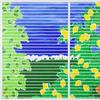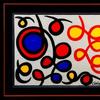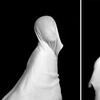Quilts Made by Men in Wartime Coming to American Folk Art Museum
- NEW YORK, New York
- /
- July 11, 2017

War and Pieced: The Annette Gero Collection of Quilts from Military Fabrics, is the first exhibition in the United States to highlight quilts made by men during times of war, using wool from military uniforms. The exhibition will go on view at the American Folk Art Museum in New York (2 Lincoln Sq., Columbus Ave. at 66th Street) from September 6, 2017 through January 7, 2018.
Twenty-nine quilts -─ many never before on view -─ are drawn primarily from the unparalleled collection of Australian quilt scholar Dr. Annette Gero and augmented by significant examples from Austria, England, and private and public collections in the United States. The exhibition is organized by the American Folk Art Museum, New York, in collaboration with the International Quilt Study Center & Museum, University of Lincoln-Nebraska. It is cocurated by Dr. Annette Gero, international quilt historian, author, and collector, and Stacy C. Hollander, deputy director for curatorial affairs and chief curator of the American Folk Art Museum.
“What is extraordinary about the quilts in this exhibition is the range of techniques used and the painstaking detail in their creation, and the fact that they are made by men,” commented Dr. Anne-Imelda Radice, executive director, American Folk Art Museum. “Men, who are not usually raised learning the sewing arts, show both design acumen and manual dexterity as they sewed pieces of military uniforms, blankets, and other bits of discarded fabric into quilts of great beauty. These quilts offer an insight into military life and the need for creative expression even during times of war.”
The earliest textiles in the exhibition are pictorial quilts made during the Austro-Turkish, Prussian, and Napoleonic wars in a technique known as intarsia. In this challenging method, practiced primarily by professional tailors, shapes are cut out and assembled with no seam allowance using an overstitch, like fitting together the pieces of a puzzle. The stitches disappear in the felted nap of the heavy woolens. Most of these textiles refer to war and the shifting geo-political landscape. A rare example dated 1719 illustrates the triumph of Austria over the incursions of the Ottoman Empire. Others of these early works depict soldiers, musicians, the Habsburg double-headed eagle, folk tales, and architectural monuments of the Holy Roman Empire. One unusual quilt was made by a Prussian prisoner of the Napoleonic War, who used scraps from military uniforms.
Immigrant tailors, such as Hungarian-born Michael Zumpf, introduced the intarsia technique into Great Britain. Two masterworks, exhibited to great acclaim in London during the late nineteenth century, feature minutely detailed representations of British military and political leaders, and members of the House of Commons. These elaborate pictorial panels were made using popular etchings of those subjects as templates.
Perhaps the best-known quilts that were made by soldiers and regimental tailors are the complex geometrics fashioned from felted military uniforms. Hand-stitched by nineteenth-century British soldiers, sailors, and regimental tailors during periods of conflict in the Crimea, South Africa, and India, some of these mosaic-like quilts contain as many as twenty-five thousand pieces of fabric. They were once called “convalescent quilts,” it was believed they were made as occupational therapy by wounded soldiers recovering in hospitals. Quilts pieced in simple geometric patterns may indeed have been made in such circumstances, but it is now recognized that the most elaborate quilts were most probably stitched by tailors and soldiers to pass the time and stay out of mischief, to give as gifts to loved ones at home, or were made upon a soldier’s return.
“In the context of war, quiltmaking becomes a life-affirming testament to bravery, loyalty, and an act of redemption for darker human impulses enacted under dire circumstances,” says Stacy C. Hollander. “Memory and experience are fragmented and brilliantly reconstructed through tiny bits of cloth. The uniforms, associated with the best and worst of humanity, are thus transformed into testaments of sanity and beauty, even as the highly organized geometry grants the soldier an illusion of control over the predations of war in which he has both participated and witnessed.”
“There are fewer than one hundred of these quilts in the world, and no two are alike,” says Dr. Annette Gero. “Treasured as family heirlooms, these quilts have rarely seen the light of day – until now. The incredible beauty of these quilts is amplified by the facts of their creation. Stitched while recovering from the wounds of war or while interned in prisoner-of-war camps, the quilts show man’s determination to create beauty out of the fear and dread of war.”
War and Pieced: The Annette Gero Collection of Quilts from Military Fabrics will travel to the Quilt Study Center & Museum, University of Lincoln-Nebraska, to be on view May 25–September 16, 2018.
The exhibition is accompanied by an illustrated, 240-page publication Wartime Quilts: Appliqués and Geometric Masterpieces from Military Fabrics by Annette Gero, available at the American Folk Art Museum Shop and online at shop.folkartmuseum.org.


270x400_c.jpg)





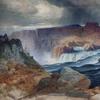




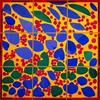

_(17100x100_c.jpg)


